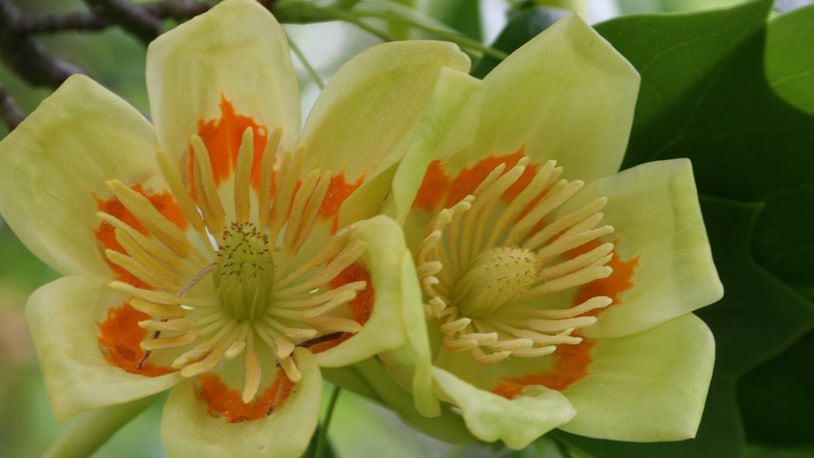This tree is also known as the tulip tree or yellow poplar but is not related to tulips or poplars. The tulip reference comes from the shape of the flowers. They truly are magnificent.
Most people don’t see the flowers of this tree because they appear high up in the tree and are held above the branches so you really have to be looking for them.
The flower is about the size of a tulip (or the size of my fist) and has six greenish-yellow petals that are painted with a vivid orange at the base of each petal. The stamens (or the part that holds the anthers with the pollen) are quite prominent.
This deciduous tree is from the magnolia family and is native throughout most of the Eastern United States.
It grows to around 80-feet tall and about 40-feet wide. It prefers slightly acidic, well-drained soil. We don’t usually have slightly acidic soils in our area but these trees do quite well.
In fact, if you have a neighbor with one of these trees, you might find seedlings in your landscape as I do. If they pop up in the flower beds, I try to move them when they are very young.
This is one of the fastest-growing shade trees next to ash and other than the petals that drop in the spring after bloom, it’s not very messy.
The tree is susceptible to verticillium wilt. If you have had a maple in the landscape that died due to verticillium wilt, don’t plant this tree back in there.
A lot of gardeners planted their vegetable gardens and bedding plants this past week during the extremely hot temperatures. We planted field trial plots and the Garden of Eatin’ last week and really struggled to keep up with the watering.
I know we are supposed to have a stretch of rain and cooler temperatures which will help these plants considerably.
You may have noticed this past week that your new plants, even though you kept them watered, wilted in the mid-day heat, only to perk up at night.
Newly established annuals, perennials and vegetables don’t have a root system that can keep up with moisture loss on warm windy days. Therefore they wilt in the heat and perk up when it’s cooler at night.
Eventually, with cooler temperatures, a little rain, and the roots taking off and becoming established, these plants will be OK.
However, if the temperatures go back up be sure to check every so many days for moisture content.
About the Author
